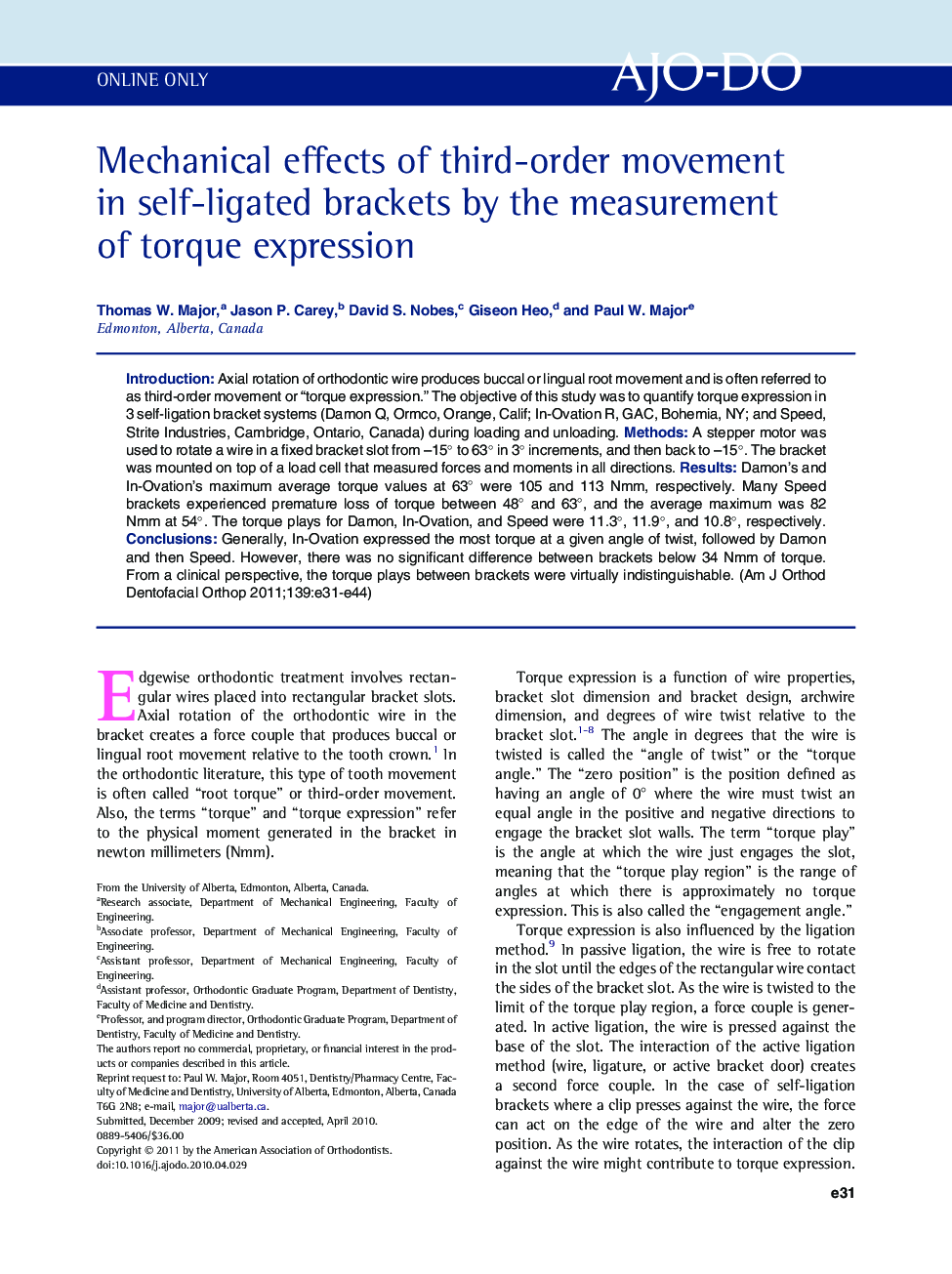| Article ID | Journal | Published Year | Pages | File Type |
|---|---|---|---|---|
| 3117324 | American Journal of Orthodontics and Dentofacial Orthopedics | 2011 | 14 Pages |
IntroductionAxial rotation of orthodontic wire produces buccal or lingual root movement and is often referred to as third-order movement or “torque expression.” The objective of this study was to quantify torque expression in 3 self-ligation bracket systems (Damon Q, Ormco, Orange, Calif; In-Ovation R, GAC, Bohemia, NY; and Speed, Strite Industries, Cambridge, Ontario, Canada) during loading and unloading.MethodsA stepper motor was used to rotate a wire in a fixed bracket slot from –15° to 63° in 3° increments, and then back to –15°. The bracket was mounted on top of a load cell that measured forces and moments in all directions.ResultsDamon’s and In-Ovation’s maximum average torque values at 63° were 105 and 113 Nmm, respectively. Many Speed brackets experienced premature loss of torque between 48° and 63°, and the average maximum was 82 Nmm at 54°. The torque plays for Damon, In-Ovation, and Speed were 11.3°, 11.9°, and 10.8°, respectively.ConclusionsGenerally, In-Ovation expressed the most torque at a given angle of twist, followed by Damon and then Speed. However, there was no significant difference between brackets below 34 Nmm of torque. From a clinical perspective, the torque plays between brackets were virtually indistinguishable.
